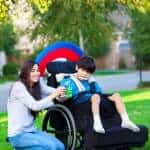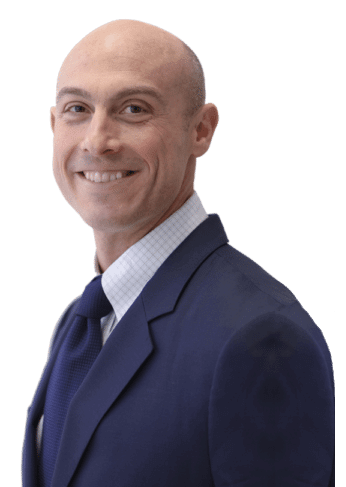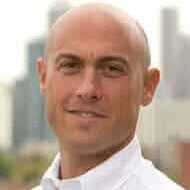Cerebral palsy is one of the most common neurological disorders found in children, and it usually happens when the child has suffered a birth injury.
Cerebral palsy will impact muscle tone and lead to muscle stiffness. In addition, a child with cerebral palsy may suffer from other conditions accompanying the disease.
If your child’s cerebral palsy spasticity resulted from medical negligence, your family might be entitled to financial compensation. Contact the birth injury attorneys at Rosenfeld Injury Lawyers today at (888) 424-5757 to schedule your free initial consultation related to a spastic cerebral palsy lawsuit.

A Spinal Cord or Brain Injury Could Cause Spastic CP
Spastic CP results from brain injury to the motor cortex. The damage could have happened in utero or during the labor and delivery process when there was a traumatic brain injury.
Other factors that can cause spastic cerebral palsy not directly associated with damaged motor cortex might include:
- Low birth weight
- Premature birth
- Spinal cord and motor nerve trauma
- Maternal infection [1]
- Multiple sclerosis
Many cases of spastic cerebral palsy are preventable. The disease will seldom happen on its own. Usually, the doctor failed to act on certain risk factors or did not take prompt action for a c-section when the mother had a difficult delivery.
How is Spastic Cerebral Palsy Diagnosed?
It may take some time for parents to begin to notice the symptoms of spastic cerebral palsy, especially when there is no initial sign of any brain damage. Usually, spastic cerebral palsy is not conclusively diagnosed until the child reaches the age of 18-24 months.
First, parents may notice some of the following symptoms:
- Missed developmental milestones
- Delayed ability to sit up (or the inability to do so)
- Lack of reflexes
- The child appears in constant discomfort from muscle pain
- The child seems overly stiff with limited motor function
- Spasticity appears in various muscle groups and soft tissues, including facial muscles on one or both sides
The spasticity is often the result of neuron bundle injury to the corticobulbar or corticospinal tracts that affect motor control in the young child’s life. Parents should bring these symptoms to the attention of the child’s doctor, especially if the child has any risk factors for cerebral palsy or has had potential brain damage.
The child’s pediatrician would then send your child to a neurologist, who would run tests. The neurologist would also observe your child and may order some of the following tests:
- CT scan
- A magnetic resonance imaging test
- Electroencephalography (EEG) to look at electrical activity in the brain
- Electromyography (EMG) [2] to check for muscle weakness
The doctor may run a combination of these tests and examinations that could rule out other conditions causing your child’s symptoms or identify the many factors that accurately diagnose children with spastic cerebral palsy.
Once your child is diagnosed with cerebral palsy, you should begin intensive therapy involving various treatment options to improve mobility and contact a birth injury lawyer. Chances are that your child’s condition resulted from medical negligence because very few cerebral palsy cases happen independently.
What Spastic Cerebral Palsy Means for Your Child
The main feature of spastic cerebral palsy is an increased muscle tone. The brain and spinal cord signals do not work well, resulting in spastic muscles. The pyramidal tracts relay the brain signals to the muscles that are damaged, resulting in a movement disorder.
Often, muscle stiffness could impact your child’s ability to walk normally and independently, leading to chronic pain in their lower limbs.
While cerebral palsy is not a spinal cord injury, it will share many of the same features. The central nervous system is also affected by spastic cerebral palsy, and your child may have difficulty with the following:
- Learning
- Hearing
- Seeing
- Thinking
Cerebral palsy also has other conditions that occur at the same time. The most common other condition is epilepsy. Roughly 40% of children with cerebral palsy will also have seizures.
Your child may also experience mental health issues due to their injury. Therefore, treating the whole child, including mental health support, is vital. Your child would have an entire treatment team of doctors and therapists who administer therapy and treat the child’s physical symptoms.
Statistics About Spastic Cerebral Palsy
Spastic cerebral palsy is the most common form of the disease. According to the Centers for Disease Control, roughly 80% of palsy cases are of the spastic variety. Spasticity affects children with cerebral palsy in different ways.
Some children with spastic cerebral palsy will also have another form of cerebral palsy that will make the condition more difficult. Mixed cerebral palsy can combine spastic CP with ataxic or dyskinetic cerebral palsy [3], leading to a more challenging case that will reduce more of your child’s normal functioning.
Different Types of Spastic Cerebral Palsy
Here are some types of spastic cerebral palsy:
- Spastic diplegia is a form of cerebral palsy that primarily affects the legs. The child will have a “scissor walk.” Doctors typically identify spastic diplegia when the knees turn inward while walking due to tightness in the knees and muscles.
- Spastic quadriplegia is the most serious type of spastic cerebral palsy. Usually, spastic cerebral palsy will primarily affect the legs. Spastic quadriplegia will impact both the legs and arms. Your child will require lifelong support.
- Spastic hemiplegia, as opposed to affecting the arms or legs, spastic hemiplegia will impact one side of the body. It could affect both the arm and leg on that side from an early stage in the child’s life into adulthood.
Abnormal walking [4], where knees cross in a scissor-like motion, is a common symptom of cerebral palsy, where the person’s ability to perform tasks is severely limited.
Stiff Muscles Are the Primary Symptom of Spastic CP
The affected muscles in spastic cerebral palsy are usually in the legs (especially the calf muscles). It is very rare for the arms to be impacted. Unlike dyskinetic cerebral palsy, where children experience jerky movements from overactive muscles, children with spastic cerebral palsy struggle with voluntary movement.
Many other symptoms may appear with spastic cerebral palsy. They include:
- Seizure disorder
- Vision impairment
- Intellectual disabilities [5]
- Deficiencies in gross motor function
- Developmental delays
Spastic Cerebral Palsy Can Affect Bone Growth
The increased muscle tone of the spastic muscle can also impact the child’s bones. The shafts of the bones can be thin, leading to bone deformities. The long bones can grow spiral, causing joint deformities.
The deformity will increase the difficulty walking that the child may have, and they may not be able to walk at all, with or without physical therapy. Abnormal bone growth can also lead to issues with joint position and a propensity for hip dislocation.
Spastic cerebral palsy can also cause low bone density, making a child much more susceptible to broken bones and fractures. The lack of normal development of bones can also cause movement difficulties and increase the risk that the child may develop osteoporosis.
Spastic CP can also result in shortened muscles. The spastic muscles have trouble stretching out to keep up with bone and muscle growth. As a result, the child may have a joint that does not have its full rate of movement.
Treatment for Spastic Cerebral Palsy
Spastic cerebral palsy requires an entire treatment team for your child because they need extensive professional medical advice and therapy. A doctor will usually lead the treatment team with expertise in child neurology.
Early intervention can help improve your child’s short- and long-term life. They can perform daily tasks better with more motor and muscle control.
Most children have been prescribed one or more treatment options in their care plan:
- Physical and occupational therapy might help control movement and decrease muscle spasticity, and occupational therapy can help your child with specific tasks and improve their sensory functions.
- Speech therapy
- Medications (such as pain relievers and muscle relaxers)
- Surgical treatment to loosen muscles and improve movement in all four limbs (neurological surgeons may operate to provide some relief, although surgery will not cure cerebral palsy)
- Medical equipment (such as braces to keep the legs straight)
- Therapeutic heat for stiff muscles to improve mobility.
- A selective dorsal rhizotomy is a surgical procedure performed on the spinal cord to selectively remove nerve roots causing spasticity in the lower extremities.
The treatment plan is based partly on your child’s age and the severity of their case.
In addition, children may be prescribed some more routine daily measures to help reduce pain and muscle tightness, including over-the-counter medications and stretching exercises.
Why You Need a Cerebral Palsy Lawyer
Your child will need extensive physical therapy throughout their lifetime to lead as normal a life as possible. In addition, they will suffer throughout their life from the debilitating effects of cerebral palsy.
If someone was to blame for your child’s birth injury, they should be made to pay for it. However, they may either try to escape responsibility for these damages or pay your family far less than they deserve.
A cerebral palsy lawyer will hold the responsible party accountable for your child’s head injury that caused this medical condition.
Attorneys Helping Families With Spastic Cerebral Palsy Lawsuits
If your child has been diagnosed with spastic CP, there is a strong chance that a doctor could be to blame for this injury. The birth injury attorneys at Rosenfeld Injury Lawyers will work to hold the doctor legally responsible if your child’s injury was caused by medical negligence.
Call our cerebral palsy attorneys at (888) 424-5757 or email us online to schedule your free initial consultation. We will investigate your child’s injury and explain your legal options. If we have concluded that medical malpractice is to blame, we will file a lawsuit that could result in financial compensation for your child and family.
Our super lawyers operate on a contingency fee basis, so you don’t have to pay us unless we win your case.
Resources: [1] PubMed, [2] KidsHealth, [3] WebMD, [4] Springer Link, [5] BMJ Journals







